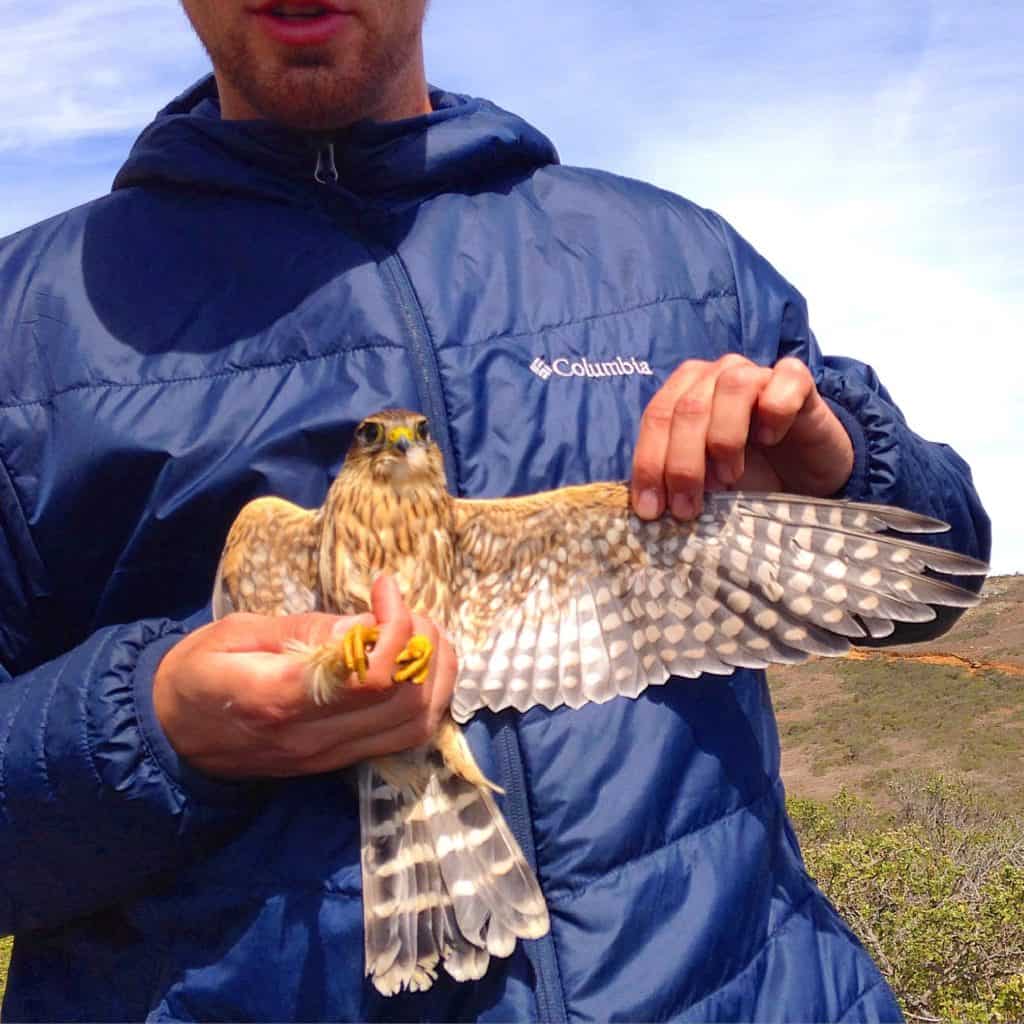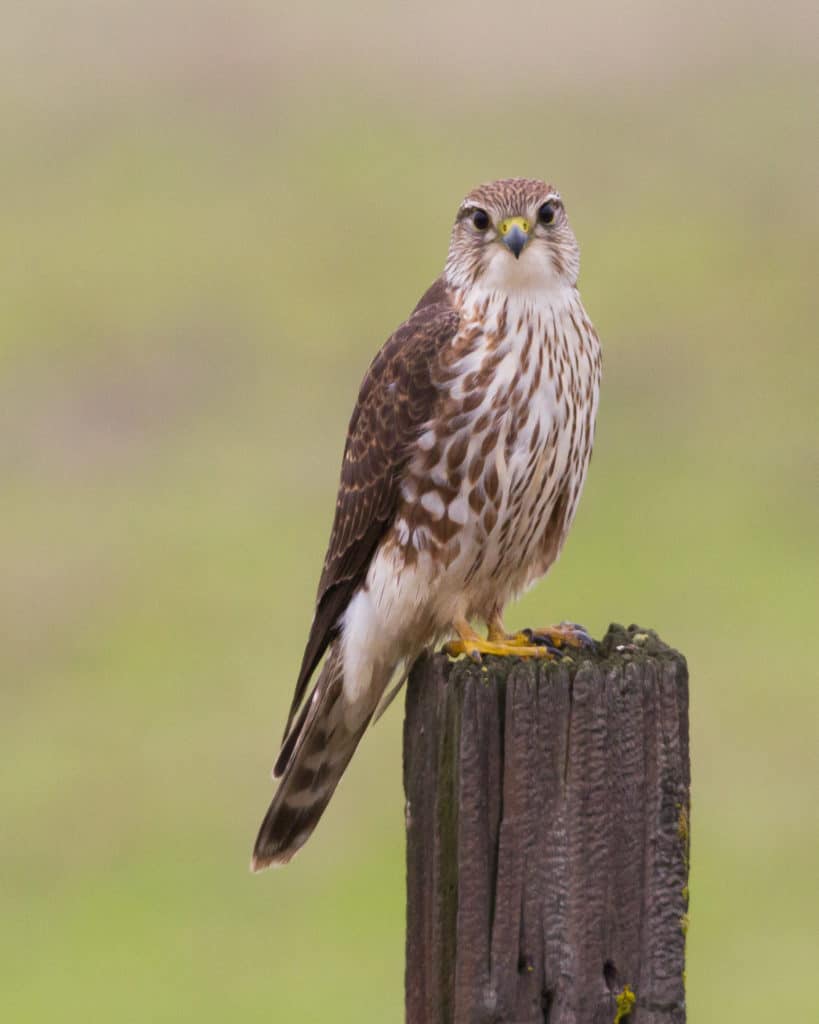Share this article
Songbirds fuel merlin migration
Blood on predatory merlins’ beaks and talons is revealing the prey that propel merlins on their annual migrations.
Merlins migrate between the boreal forests of Canada and Alaska down as far as Central and South America, where they spend the winters. Some stay put and brave the cold in the U.S.
But researchers don’t know much about the diets that fuel many raptors as they make their annual voyages. Merlins (Falco columbarius), Cooper’s hawks (Accipiter cooperii) and sharp-shinned hawks (Accipiter striatus) feed almost daily during their migration. The question is: What’s on the menu?
“Considering that merlins spend a significant portion of their annual cycle migrating to and from breeding and wintering grounds, revealing what they are eating during migration is essentially a missing puzzle piece for thoroughly describing their life history,” said Ryan Bourbour, a PhD student in ecology at the University of California, Davis.
Bourbour and his co-authors worked with the Golden Gate Raptor Observatory, a long-term raptor migration monitoring station run by the Golden Gate National Parks Conservatory and the National Park Service with help from volunteers, to find out more about merlins’ diets. They published a study on their findings in IBIS.

Ryan Bourbour and his colleagues swabbed merlins’ bloody beaks and talons while banding them near San Francisco. Credit: Step Wilson
Bourbour handed out kits containing swabs and DNA preservative to the volunteers that capture and band raptors. As he and the volunteers captured merlins, they swabbed blood and trace DNA of the raptors’ prey that was left over on their talons and beaks during fall migration seasons in 2015 and 2016.
Luckily, merlins are messy eaters—they catch prey with their talons and shred the carcass up with their beaks, leaving visible blood traces. “DNA gets all over them,” Bourbour said.
When they analyzed the DNA, they found prey data from 63 merlins over the two years. The prey they consumed included 40 bird species.
“The main takeaway was that they were mostly relying on and eating migratory songbirds,” Bourbour said, adding that 85% of the prey DNA fell into this category.
They also fed on local non-migratory species like spotted towhees (Pipilo maculatus) and lesser gold finches (Spinus psaltria).
In the first year of their study, there was also an irruptive migration of pine siskins (Spinus pinus) and red-breasted nuthatches (Sitta canadensis)—great numbers of these birds migrated in the area compared to normal years.
The results showed that the merlins took advantage of the number of songbirds that year. “In 2015, a big bulk of their diet was those irrupted migrants,” Bourbour said.

Little was previously known about merlin prey during migrations. Credit: Ryan Bourbour
The researchers also found DNA evidence of four species that aren’t typically found in the Golden Gate National Recreation Area, including mountain bluebirds (Sialia currucoides) and mountain chickadees (Poecile gambeli), usually found at higher elevations. They also found DNA of pine grosbeaks (Pinicola enucleator), and a common redpoll (Acanthis flammea), species which at this time of year are usually only found in Oregon or farther north. Bourbour said the merlins were likely eating these species on an earlier leg of their migration—evidence that genetic material can be preserved on the beaks and talons of merlins for some time.
Bourbour said that understanding merlins’ diet is critical for conservation.
“Since merlins need to feed almost daily to fuel their migration, disruptions in migratory songbird populations can directly affect migratory merlins,” he said. “Conservation and management efforts that protect habitat within migration corridors, such as important stopover sites for migratory songbirds, can also affect the migratory raptors that depend on prey along a migration route.”
Header Image: Merlins need daily meals to fuel their long migrations from Canada down as far south as South America. But what do they eat? Credit: Ryan Bourbour








